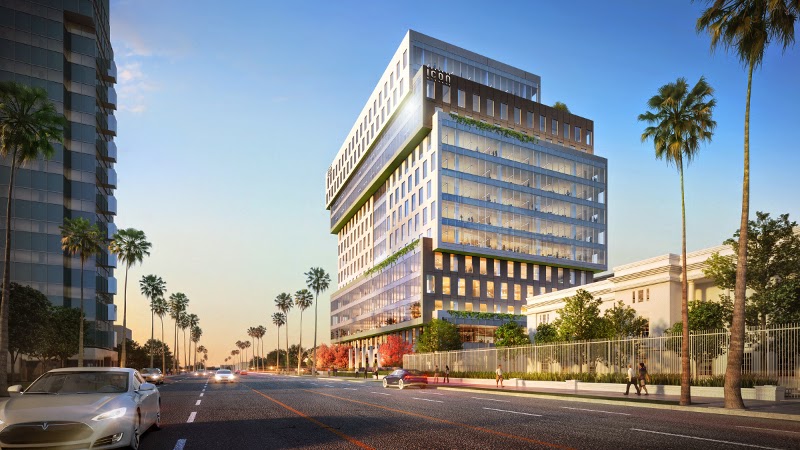Downtown stakeholders breathed a collective sigh of relief last February, when developer G.H. Palmer - he of freeway-adjacent, "fauxtalian," infamy - revealed more contextually appropriate plans for a
mixed-use development near the Ace Hotel. That historically-themed design will soon be put to the test, as the Beverly Hills-based developer has finally begun work on the the project known as Broadway Palace. Crews are currently demolishing an existing building and surface parking lot at the southeast corner of of Broadway and Olympic Boulevard, clearing the way for the first of the complex's two buildings.
The low-rise and mid-rise project, designed by Nelson/Boivin Architecture & Planning, calls for a cumulative
686 apartment units and over 50,000 square feet of ground-level commercial stalls. The buildings, which will be clad in brick veneer, are to rise on opposite sides of Olympic Boulevard. Planning documents indicate that the project may be linked together by a pedestrian bridge, an amenity which
became a controversial issue for a different Palmer development earlier this year.
The first of Broadway Palace's two buildings, known by the prosaic title of "Building A," will rise six stories from the former parking lot at 1026 South Broadway. Upper floors will comprise a mixture of 240 studio, one, two and three-bedroom apartments. Ground-level frontage on Broadway, Olympic Boulevard and Main Street will be lined with approximately 17,500 square feet of commercial space and seven live-work residential units. Parking accommodations for 421 vehicles will be situated within a three-level, partially subterranean garage.
North across Olympic Boulevard, the lion's share of Broadway Palace's residential units will rise from a longtime parking lot at 928 South Broadway. The abnormally shaped "Building B," will contain a total of 439 studio, live-work, one and two-bedroom apartment units above 35,000 square feet of street-level retail and restaurant space. This portion of project checks in with a copious 1,152-car garage, contained on four underground levels.
Building B features an usual design, calling for for a ten-story, concrete-framed structure along Broadway and a six-story, wood-framed building along Main Street. This peculiarity is the result of a section of the
Broadway Design Guide which stipulates minimum building heights within its boundaries. As a result, new developments are forced to maintain Broadway's signature mid-rise street wall even while they replace surface parking lots and dilapidated one-story structures.
Palmer's colossal mixed-use development is the latest entrant into an ongoing development boom which has enveloped several blocks on the eastern periphery of the South Park neighborhood. East along Olympic Boulevard,
four low-rise residential-retail projects are simultaneously under construction from the Houston-based Hanover Company and the Miami-based Lennar Corporation. To the northwest, the Onni Group has nearly topped-out on a
33-story apartment tower at 888 Olive Street.
Other mixed-use projects are currently wending their way through the planning process. Developer Barry Shy recently unveiled plans for
multiple residential projects in and around the Historic Core, including a new 15-story tower across the street from Broadway Palace and
the adaptive re-use of an adjacent building. South at the intersection of Broadway and 11th Street, a trio of historic structures are slated for conversions into boutique hotels and creative office space.
![]() |
| 1026 and 928 South Broadway |



































